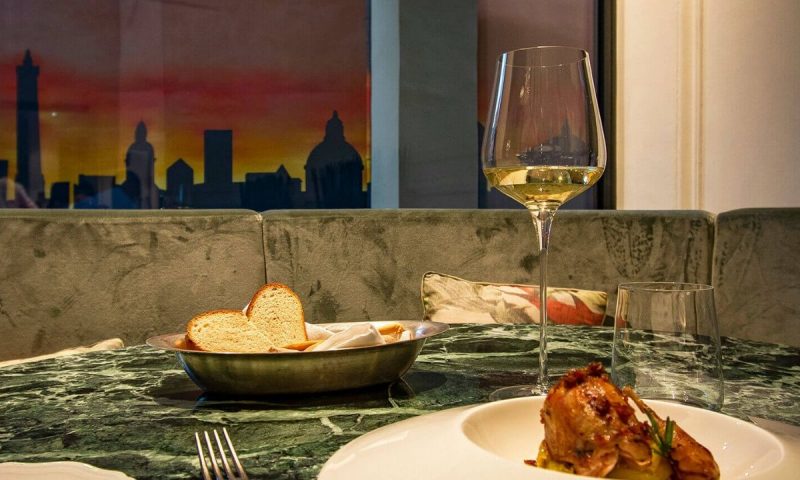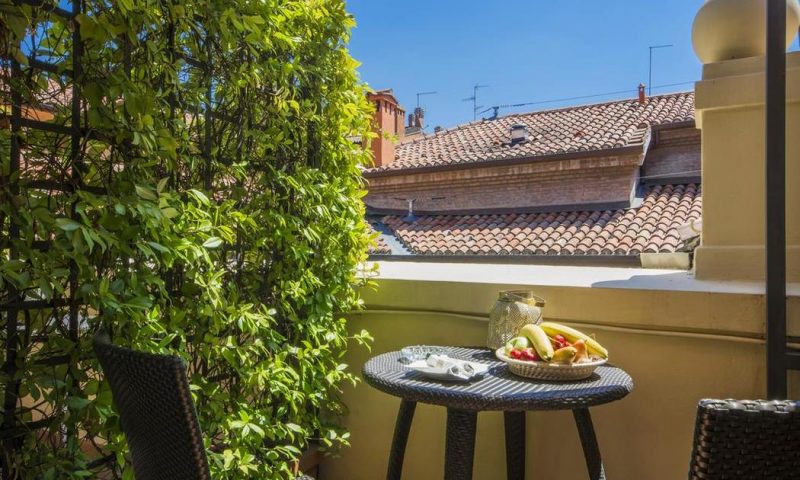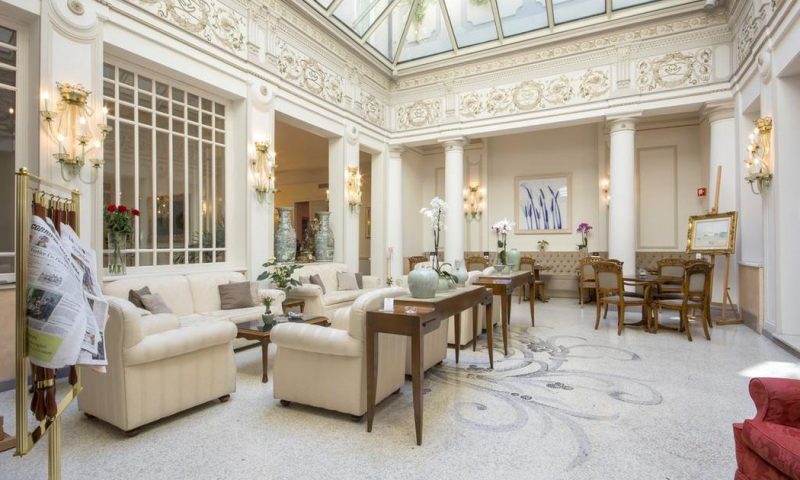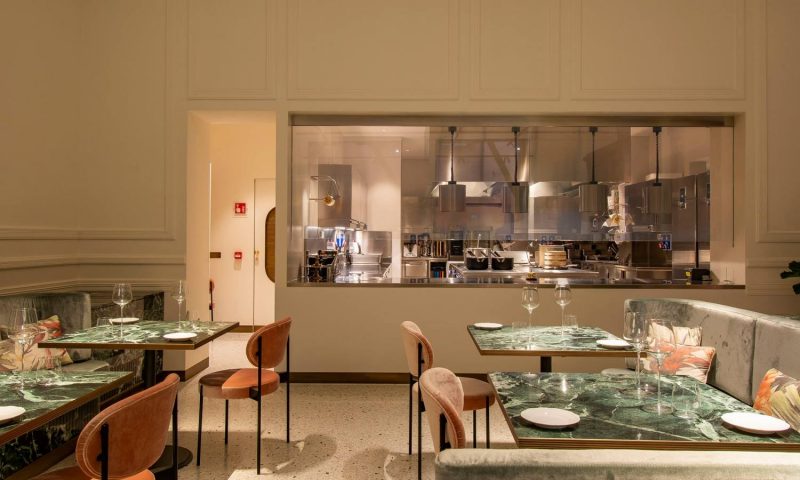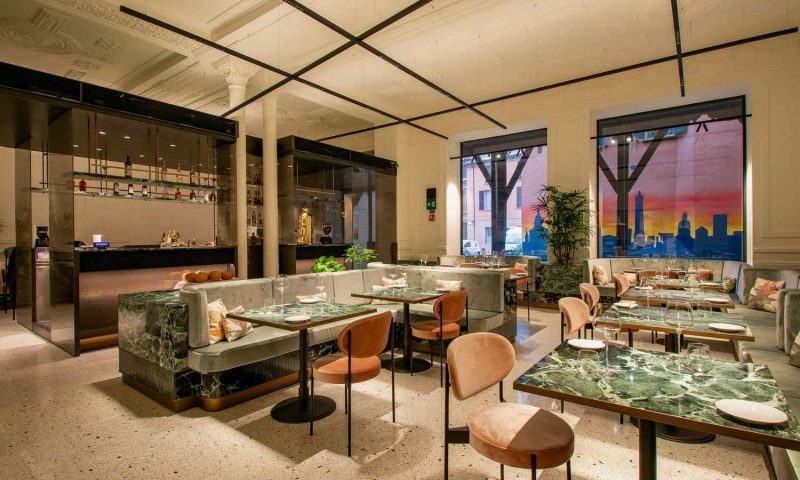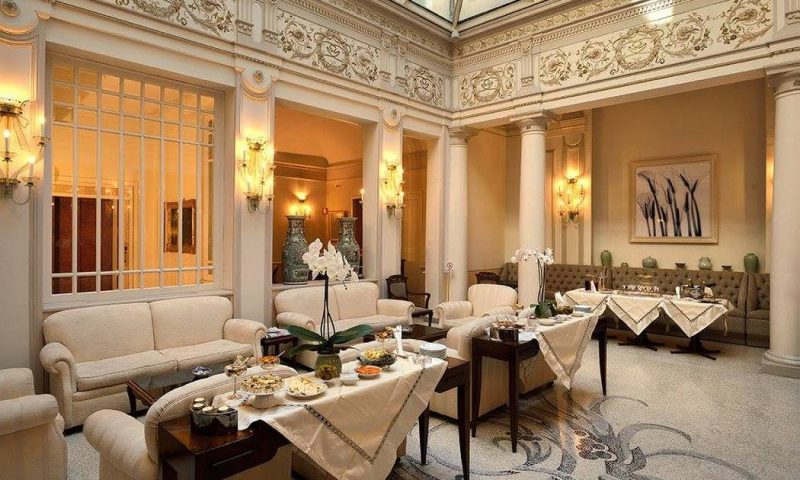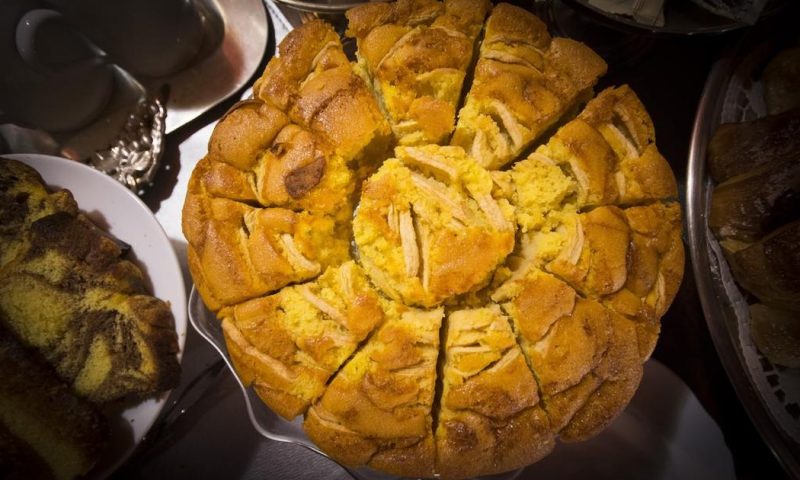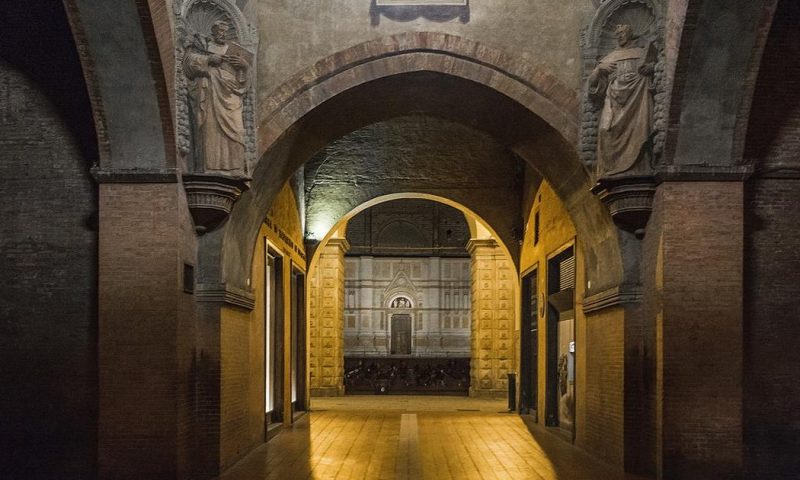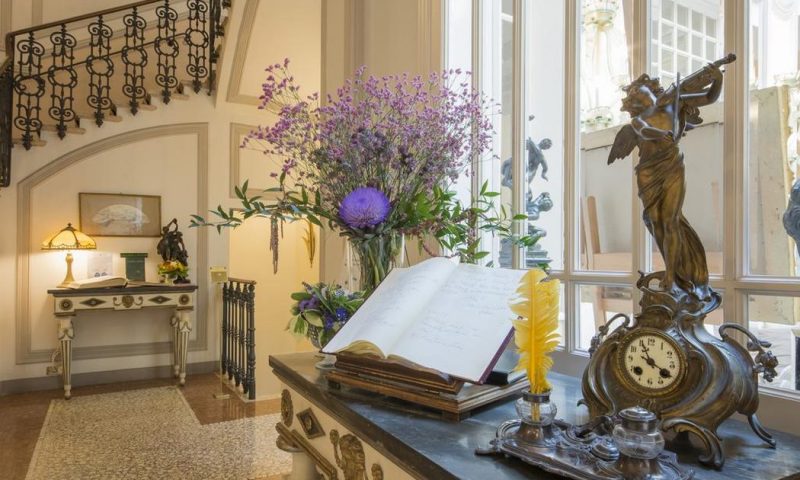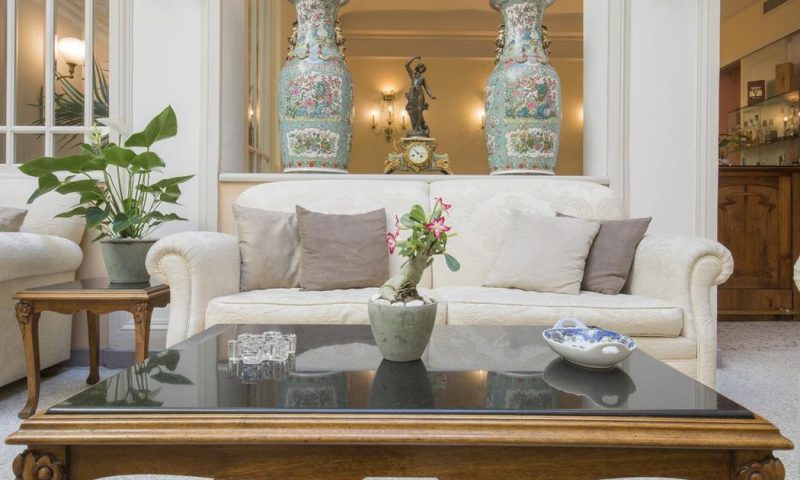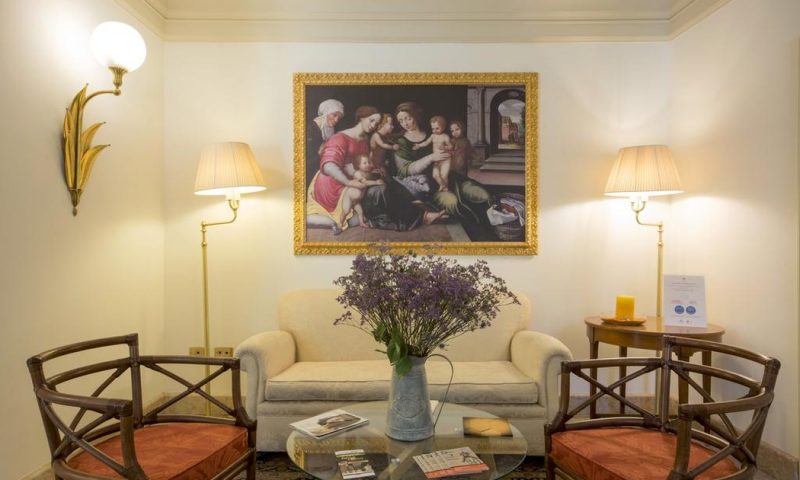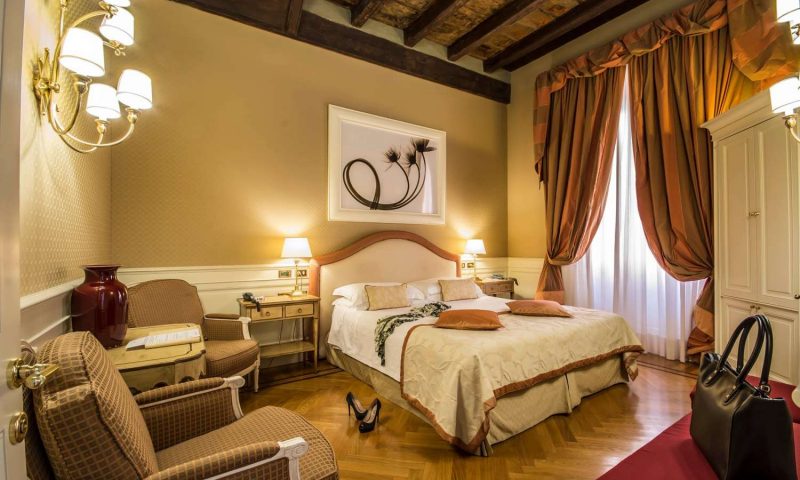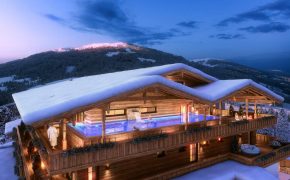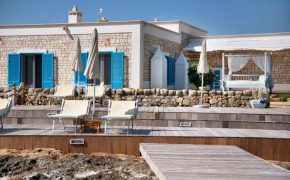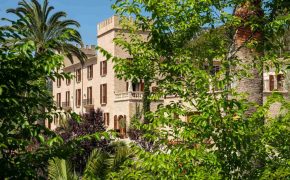The historic Hotel Corona D’Oro, located in the heart of Bologna, is a true and genuine preferential window to the “two towers”, one of the symbols of the city, which is only a few steps away.
There are 40 rooms, all delicately decorated in a classic style and characterized by an elegant and enchanting atmosphere, the result of a recent restoration. One of the hotel’s characteristics is represented by the sophistication of its ambience and its incomparable calmness that one can experience in every room.
Hotel Corona D’Oro perfectly preserves the original parts of the antique building that it houses, among which are the medieval portico on the outside and the precious panelled ceilings covered in renaissance frescos.
The magnificent Liberty Hall, illuminated by natural lights thanks to its grand glass cupola that opens during the summer months and creates an appealing and unique atmosphere.
The central location is perfect for visiting the city’s all main attractions on foot: splendid piazzas, museums, historical buildings, renowned restaurants, shopping promenades. Hotel Corona D’Oro, though located in a limited traffic zone, is reachable by cars and has its own spacious and convenient private garage.
THE HISTORY
The building went up in the XIII century and a proud holder of an elegant medieval portico on the outside. Belonged to the powerful family of Azzoguidi at the time, reminded by a large celebratory sign, the antique building through the course of centuries has had various restorations: from XV century, the frescoed panelled ceilings remain, greatly preserved; and the refine work of oil on canvas, Madonna con Bambino, that embellishes the room where it is located.
The elegant hall, with plasters in style of Liberty, went up at the beginning of the XX century. What makes this hall special is its construction of a bright and strategic glass cupola that opens during the summer and transforms the space into an open internal courtyard, unique and appealing.
“When I was built, as you have heard, it was late medieval period…” Bologna in that moment was a jungle of towers under which, us, resident houses grew up protected, proud of our wood porticos, of our windows often decorated in terracotta tiles, and the curves that connect us.
Life, certainly, was not easy for everybody: students from every part poured into Alma Mater Studiorum and rendered lively, sure, but also agitated the community a bit, which was already busy with commerce and a series of small productive activities; the political sequences and fractions were more than ever ignited and relocate us, often, further to the families of this or that part; there were also their belongings, their houses.
This where I was raised was still in the heart of the city: from above the towers were watching me, the memories and names belonged to the history, not only architectural, but of Bologna: the Guiozagni tower and the Uguzzoni tower were erected in the 200s; the Prendiparte, as everybody called it, “Coronata” (crown) for the shape of its peak; the Altabella (tall and beautiful), well deserved definition, with 60 meters of height: its true name, however, was Azzoguidi.
The history of my life has quiet a lot of importance because we – if one can say – were from the same family. Since the area was “going” well, a certain Agostino Torati came up with an idea of opening his own locanda with an osteria. Where? In the property of the Broglia, number 1616 on Via Cavaliera: preparing, in retrospective, a new destiny for me.
Indeed, in the license application that Torati requested from the Ufficio d’Igiene Comunale on the 30th of April, 1865, indicating that the street, according to the layout, was very central and “a grand concourse of people”; however, keeping in mind that about 80 meters away, Il Locanda di Marino was already open and there were no schools or boarding schools near by.
The license, granted to Agostino Torati, on the 20th of May by city commission. Osteria with locanda (second category business) began its business activities in the building besides me. An activity that I followed, in all senses, closely then concluded as union between me and the “Corona d’Oro” (this was a new name for business), between my ancient nobility and its young entrepreneur.
It was her, confusedly thought to have become an “entrepreneur” and no longer a simple hostess, organized the memorable party for the New Year of the century: 1900! The rooms of the Corona d’Ora that night was filled with men in tuxedo, and beautiful women in boa, aigrettes and sequin dresses, as the fashion trend of the XX century.
Everyone toasted to the New Year with excellent sparkling wines that Carolina served among the velvet, mirrors, and golden setting of her elegant belle époque place.
The arrival of the XX century also brought innovations to the spaces of the hotel: the team of workers generated improvements,and above all, the arrival of something completely new, the bathrooms. Carolina installed two per floor.
Then she restored the glass windows, and putting herself to advertise her business: in 1902 showing up in front with embossed letters, written, “Albergo della Corona d’Oro”.
She had some doubt: how to paint these letters before attaching them on the façade without damaging the bon ton of the hotel? She decided, better, without colors. She left them in concrete color. The choice showed a lot of prudent.
The luxuries of a time (like telephone) slowly became normal necessity for every single room. Giaconda Raspi Paulucci, who “guided” the “resurrection” of the hotel, adapting it to the times and needs of clients, yet without a successor.
And in 1969, the “Società Liberty” owned by two foreigners succeeded; Giovanni Tellarini (incredibly a Polish national, in spite of a very Italian first and last name) and an Australian, Joseph Doyle.
I believe that my old friend Agostino Torati, the savvy Bonaventura, and Giaconda would have been a little disturbed from their eternal sleeps by such“internationalization” of the property of “their” authentic business, profoundly patronage by conquering, for centuries, the fame of exemplar hotel for Bolognese receptiveness and hospitality.
A sentiment, anyhow, has accumulated those who had made the Corona d’Oro live and prosper: the love for the beauty, for my past, for the testimony of arts and customs that I, for centuries, have represented.
ROOMS & SUITES
All rooms, as the result of a recent restoration, have refine decors that contribute to create an enchanting atmosphere, an expression of constant attention to details that characterizes the style of the hotel.
The rooms and suites are very pleasant and a hallmark of every comfort. Every room has its own precious fabric from which one can admire the characteristic glimpses of the medieval city that add to every unforgettable stay.
SUITES
Hotel Corona D’Oro, along with the double rooms Classic and Deluxe, is proud to house three beautiful suites. The most important is the Suite Deluxe.
It offers two great separate ambiences and preserves a part of the fresco-panelled ceilings that are present inside the upper part of the suite from the XV and XVI centuries and painted with coat of arms and in Latin.
Luxurious living rooms with armchairs and couches precede the bedroom, lavishly decorated with precious tapestries and complementary furniture to recreate the grandeur of historical residence.
The other two suites are characterized by very big single area. The room opens to the day area that remains separated from the night area by a designated closet as a dividing wall. All suites have big refine bathrooms with luxurious marble and are fitted with both bathtub and shower.
In order to improve your sleep in our hotel, we are glad to offer you the possibility to choose a suitable pillow that fits to your needs. For a relaxing sleep and for a right posture. We have a selection of pillows that you may choose directly dialing to the reception.
DELUXE ROOMS
The double rooms Deluxe are rooms of superior category, characterized by elegance and spacious ambience. Conceived and decorated as a hallmark of luxury, these rooms are bright and rich in finishing touches. They offer two different solutions, a wide and comfortable king size bed or two twin beds.
Like Classic, the double rooms Deluxe have precious fabrics and are the result of a recent restoration, yet the Deluxe version distinguishes itself by having an designated angle for a sitting room inside.
They are the full expression of classic style hotel. They offer pleasant king-size bed or two separate twin beds. Some of the double rooms Deluxe are enriched with romantic balconies, ideal for breakfast or aperitif in total privacy along with the view of red roofs and medieval towers of the city.
The rooms are fitted with precious wooden flooring and have wide marble bathrooms with bathtub or shower. Double rooms Deluxe are available to both smokers and non-smokers.
The Hotel Corona D’Oro offers just 3 Deluxe rooms with balcony. We will be more than pleased to satisfy any specific request accordingly to availability. It may be required a small daily fee to guarantee advance booking of the room with a balcony.
In order to improve your sleep in our hotel, we are glad to offer you the possibility to choose a suitable pillow that fits to your needs. For a relaxing sleep and for a right posture. We have a selection of pillows that you may choose directly dialing to the reception.
CASA AZZOGUIDI RESTAURANT
Hotel Corona D’Oro is proud to announce the birth of the newest jewel in the house, the first in-house restaurant to open in the fall of 2021. Casa Azzoguidi stands in one of the city’s oldest buildings, built in the 14th century and undergoing a major restoration in 1905.
In the Middle Ages this place represented the heart of the ancient city of Bologna; in fact in the thirteenth century in this area rose towers whose names belong to the history of Bologna: Guidozagni, Uguzzoni, Prendiparte and Altabella (originally called Azzoguidi Tower).
During the restoration of the early twentieth century, under the perfectly preserved wooden porch that we can still admire, appeared some coats of arms, then traced back to the noble family Azzoguidi, who wanted the construction of this building and held the property for centuries.
In this same building was located in 1470 the first printing house in Bologna, started by Baldassarre Azzoguidi. What you will find when you cross the threshold of Casa Azzoguidi, will be a contemporary and international location, with Art Nouveau design and a refined style and attention to detail, an elegant but at the same time welcoming and enveloping with its atmosphere of soft colors and fine finishes.
The cuisine of Casa Azzoguidi will not fail to amaze you with proposals ranging from the excellence of national cuisine to a selection of the best traditional Bolognese, local and regional dishes.
THE BREAKFST
Hotel Corona D’Oro takes care of its guests from the moment they wake up, and puts big emphasis on breakfast by offering great assortments of delicacies in the beautiful Liberty Lobby. Every morning, from 7:30 to 10:00 a buffet composed of abundant variety of fresh and quality products that awaits guests to start a good day.
To accompany the aromas of hot coffee, one also finds great choices for salty and sweet products that satisfy all tastes and necessities: in the angle of sweets, there are fragrant brioches and an assortment of delicious and fresh pastries (cream, honey, chocolate) as well as traditional cakes among which are honey tart, torta della nonna (gramma’s cake with cream and pine nuts), ricotta cake, fruit tart, marmalade tart, chocolate and pear tart, carrot cake, rice tart, plumcakes, and pancakes are all homemade and accompanied by maple and agave syrup, cereals and granolas, dry fruits also to provide the energy to take on a business meeting or a pleasant day of visiting the historical city center.
For salty breakfast lovers, delicious scrambled eggs and bacon, hard-boiled eggs, dressed or plan Russian salad, cold cuts from the traditional Emilian cuisine and mixed cheese board; flatbreads with tomatoes, oregano, and vegetables; selections of white sandwiches with prosciutto; and whole grain bread all come from the bests bakeries of Bologna.
Furthermore, there are fruit salad, fruits in syrup, seasonal fruits all year round, yogurt, marmalades, honey, hazelnut cream, all accompanied by caffè espresso, caffè americano, cappuccino, fresh milk, great selection of teas and infusions, minerale water, various fruit juices, freshly juiced citrus, and prosecco to start a celebrative day!
For guests with other needs, an angle completely dedicated to gluten free products, soymilk for vegans and vegetarians.
MEETINGS
Hotel Corona D’Oro also houses a small convention center with three meeting rooms with various capacities and equipped with the most modern technical tools. The meeting rooms vary in sizes and characteristics.
Hotel Corona D’Oro organizes meetings, conventions, business conferences, and events at the hotel and other carefully selected prestigious locations in the city center based on the clients’ necessities. At its heart is the possibility of fully living a first-hand experience in the excellent and typical Bolognese traditions.
We avail ourselves with highly trusted partners in catering for gala events and food services in general, companies in charge of transfer services, expert tour guides, agencies for activity management of the whole territory and province: eno-gastronomic tour in the city center and beyond, visits and tastings at production sites, such as: Balsamic Vinegar, Parmigiano Reggiano cheese, and Prosciutto di Parma that make up a part of the so-called “food valley,” visits to the “motor valley” (for the motor passionate) close to Bologna where there are factories and museums of Ducati, Ferrari, Lamborghini, and Maserati.
BOLOGNA & SURROUNDINGS
Bologna, capital of Emilia-Romagna, is affectionately defined by its citizens as “la Dotta, la Rossa, e la Grassa” (the Learned, the Red, and the Fat). La Dotta is dedicated for its university which is the oldest in the western world, founded in 1088, and continues today to attract Italian and foreign students, maintaining its very active role as cultural center.
La Rossa represents the unique color of its roofs and houses that contribute to maintain the vivid atmosphere of the city during medieval period. Lastly, Bologna
La Grassa is an honor for its well-known and famous gastronomic traditions: the Bolognese cuisine is rich, flavorful, and known all over the world, especially for its typical dishes: tortellini, lasagna with meat ragout, mortedella, succulent cotoletta alla Bolognese, only to name a few.
Piazza Maggiore is the main piazza (square) of Bologna. It was originally built on a grass field; in 1200, the city started to acquire houses and lands to construct a square that would represent the importance of the city institution as well as reunite various activities (commercial and services).
The square, as it is today, is the result of numerous transformations that began from the XIII century and intended to give the city its symbolic center, which it still preserves today.
San Petronio is the main church of Bologna: it dominates Piazza Maggiore, and in spite of being unfinished, it is the sixth largest church in Europe. The construction began in 1390 under the direction of Antonio di Vincenzo.
In 1514, Arduino degli Arriguzzi proposed a new Latin cross model that would have made the church bigger than Saint Peter’s Church in Rome. According to legend, Pope Pius IV blocked the construction of this over-ambitious dream, demanding the workers to build Archiginnasio.
The symbol of Bologna, the two towers are strategically located in the entrance point of the ancient city on Via Emilia. The Asinelli tower, erected in 1119 by Gherardo Asinelli, a nobleman from the Ghibellini family; it is 97,20 meters tall and houses 498-step stair case; it leans 2,32 meters westward.
The Garisenda Tower, erected in the XII century by the noblemen Garisenda and Ghibellini, is 48, 60 meters tall and leans 3,22 meters northeastward. During Dante period, the sonnet cites the Garisenda tower of 1278 and in canto XXXI of the Inferno, the tower was given another 60 meters in height.
It is the most unique complex of Bologna, a genuine and true city sanctuary. The origins of the complex, also known as “sette chiese” (seven churches), are particularly controversial.
Built on an ancient pagan temple, the complex was ought to be a devoted copy of the Holy Sepulchre of Jerusalem; through the centuries, the complex saw a series of expansions that brought not only one but seven churches, and one of these churches became famous for an unexpected discovery that required an “extraordinary” intervention from the pope.
A legend attributes the foundation of the complex to a Bolognese bishop Petronio, who would have wanted to reproduce and dedicate to Santo Stefano (Saint Stephen) the locations of the Passion of Christ.
The Church of Santa Maria della Vita was founded in the second half of the XIII century by the Battuti or Flagellati Confraternity, the name derives from the confraternity brothers’ habit of whipping the body as punishment.
The “Compianto del Cristo Morto” (Lamentation of Christ), is made of seven terracotta statues, a work of sculptor Nicolò dell’Arca (dated from 1463 to 1464), as well as his most celebrated work, the marble statues arch of San Domenico Church.
“Compianto del Cristo Morto” has seven figures on foot: Nicodemo, Madonna, San Giovanni Apostolo, Maria Maddalena, two other Marys, and the dead Christ, lying on a catafalque with his head resting on a pillow.
The Pinacoteca of Bologna offers a panoramic view of Emilian paintings from the XIII to XVIII century; nevertheless without the lack of fundamental masterpieces from non-Bolognese artists who had direct contacts but not with the city. Among the most modern and important National Galleries, the Pinacoteca of Bologna opened to the public in 1885.
Totally renovated in 1997, the Pinacoteca today houses more than 30 exhibit rooms: Fine Arts rooms and modernly equipped spaces in the basement, as well as hosting temporary exhibitions of medium and big projects, educational activities, seminars, and conventions.
Located in the Colle della Guardia hills, the sanctuary is one of the symbols of Bologna. With more than 600 continuous arch porticos, the only one in the world with almost four kilometers (3,796 m) in length, connect the sanctuary to the city and is an important part of the procession every year since 1433 that brings the Byzantine Mary and Child to the cathedral during the week of Ascension.
The sanctuary history is connected to the icon that safeguards from within, which gave the origins on the foundation of the sanctuary itself and established its faith for many centuries, making it a pilgrimage site.
The porticos of Bologna represent an important architectural and cultural patrimony of the city; they are the symbol of Bologna along with the numerous towers. In 2006, the porticos are inserted in the Italian Tentative List of sites to become a UNESCO World Heritage Patrimony.
Rain or snow, summer heat or wind, the porticos of Bologna, with a length of almost 40 kilometers, decorate this unique city, allowing comfortable strolls in the city center, shopping, going from one museum to another, and a haven for every season.
The seven secrets recount a Bologna that lives in the memories passed on from generation to generation. Not only Bologna with its history, culture, and architectural beauties, but also a city with legends well rooted in the popular traditions that talk about the seven secrets to discovery if visited accurately.
The cross vault in Piazza Maggiore that transmit sounds from one side to the other, the statue of Neptune if viewed from Sala Borsa seems to be an impression of an erected penis, the “piccola Venezia” (Small Venice) from a small window on Via Piella that gives a glimpse to the Reno River, the arrow inserted in the outside wall of a house on Strada Maggiore, arches written in Latin “panis vita, canabis protetio, vinum laetitia” (bread life, cannabis protection, wine pleasure), the broken vase on the top of the Asinelli Tower, and the antique table in the university with the writing “panum resis” (knowledge as the foundation of every decision).
Bologna is a charming city that allows, moving away from the center, to enjoy spectacles of nature and make out relaxing and rejuvenating excursions. Here are some tips: The city is surrounded by spaces that are full of color during the summer.
The green lung Margherita Garden, the oldest Montagnola Park, Di Forte Bandiera Park and many others. Enjoy relax moments, a bike excursion and a picnic in these magnificent gardens. Not only in the center, but also in the suburbs you can find cultural exhibition and entertainment.
The open-air Ca ‘la Ghironda museum with its modern art collections of contemporary painting and sculpture; Villa delle Rose, has been a place of the Gallery of Modern Art and now houses temporary exhibitions.
Bike tour ideas: Rhine Valley and Savena Valley, Senio Valley and Lamone Valley, Mount of ants, Serravalle Castle. Other attractions: Sanctuary of the Madonna di San Luca, Certosa Monumental Cemetery, Sanctuary of the Monte delle Formiche.
It is possible to book in advance an exclusive experience that will enrich your stay in the beautiful city of Bologna, choose a cultural, artistic, eno-gastronomic tour, a trip out of town and much more.
